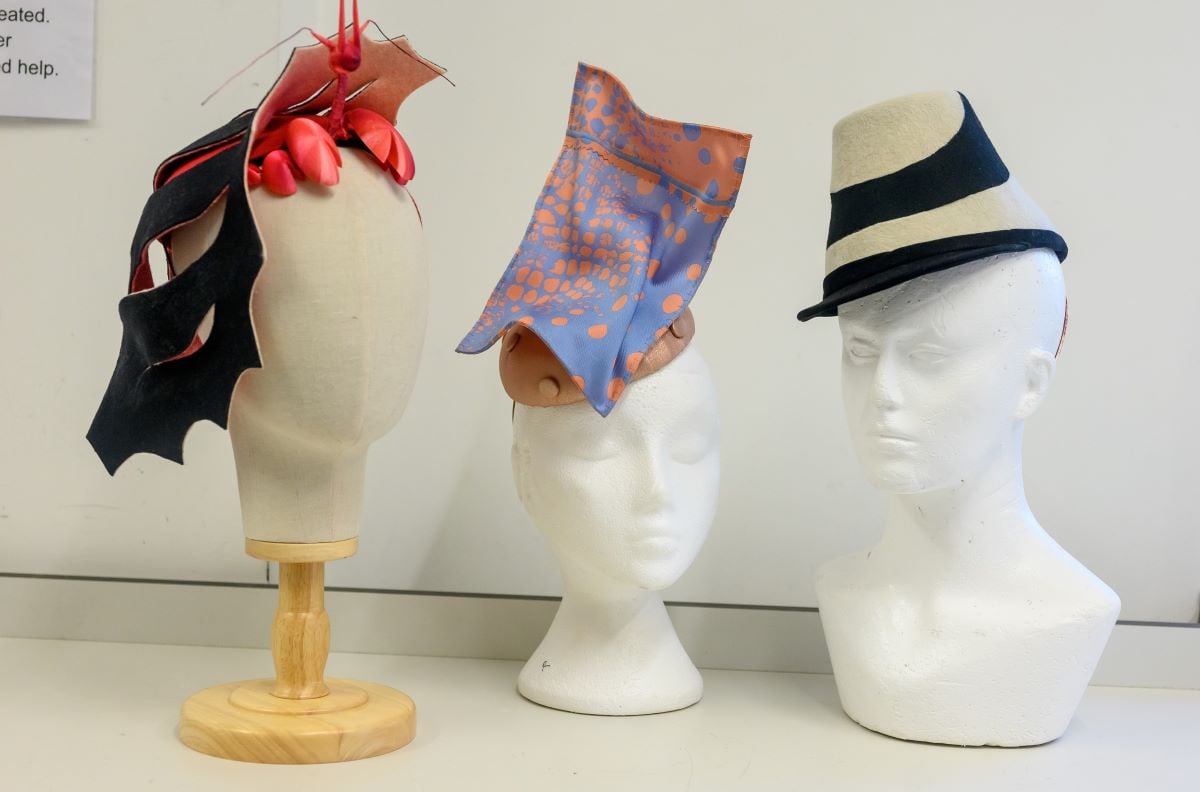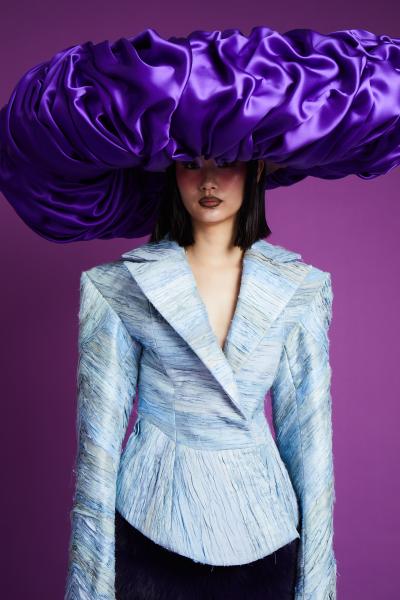
Photo: Morley College
Reviving the fascinating art of millinery
Millinery is often overlooked in the worlds of fashion and education. But, as Matthew Cunningham shares, it is experiencing a comeback.
The art of millinery, or hat-making, has a rich history that dates back to ancient times. Hats used to be a common accessory for everyday wear but nowadays they are mostly reserved for special occasions such as religious ceremonies and cultural traditions or for practical purposes like protection from the sun, rain and cold.
The shift in popularity can be attributed to changes in fashion trends, the rise of mass-produced clothing and the perception that ‘dress’ hats are just not practical. All of which have led to a focus on mass-market production that appeals to the widest possible audience and on designs that can be produced using highly streamlined manufacturing techniques.
However, the true art of millinery requires creativity, focus and precision.
Milliners use a variety of complex techniques that require time and dedication to master in order to craft hats that are both stylish and functional. The techniques range from traditional methods – such as blocking and stitching – to more innovative techniques and skills working with a wide variety of materials, such as straw, wool, felt and feathers.
What is driving millinery's comeback?
As an aesthetic art form, millinery allows for the individual expression of a unique style and personality, often using intricate designs. As such it a medium that empowers artists to break free from trends and standards to create something that is truly one-of-a-kind.
It is this ability to deliver something truly unique and personal that is driving millinery’s comeback and Morley College London is a key player in its recent resurgence.
 A winning design from student Anna Stefanou. Photo: Michael Stuart-Daley
A winning design from student Anna Stefanou. Photo: Michael Stuart-Daley
As the only institution in the UK to offer millinery courses at degree level, Morley College London has recently been awarded the prestigious Gold rating in the Teaching Excellence Framework.
It offers an invaluable introduction to the world of professional occasion millinery. With a long and established history of providing high-quality millinery education, its tutors are some of the best in the industry.
Courses are designed to give students a comprehensive understanding of their craft from the different materials and techniques used in millinery to designing and constructing finished pieces.
Milliners in demand in theatre and film
Students also have the opportunity to develop their own creative style, attending regular industry events for inspiration and to help them develop the networks and commercial skills that are key to setting them on the path to success.
One recent graduate – testament to the college’s commitment to reviving the art of hat-making – is Anna Stefanou. After winning second prize in the Feltmakers competition, her hats went on to be exhibited at Fenwick’s department store in London.
As a result, she was invited to collaborate with two fashion brands, showcasing her hats at London and Paris Fashion Weeks. She then went on to work in the millinery department for a forthcoming Netflix production.
Anyone interested in reviving the lost art of millinery and challenging themselves to become part of the next generation of milliners, please get in touch.
Matthew Cunningham is Chief Marketing and Engagement Officer at Morley College London.
![]() morleycollege.ac.uk/courses/millinery
morleycollege.ac.uk/courses/millinery
![]() @morleycollege | @mncunningham
@morleycollege | @mncunningham
Morley College London offers a wide range of millinery courses, including Beginner's Contemporary Millinery, Contemporary Millinery, BTEC HNC in Millinery, BTEC Level 2 Millinery Design as well as Short Courses and Workshops.
Join the Discussion
You must be logged in to post a comment.